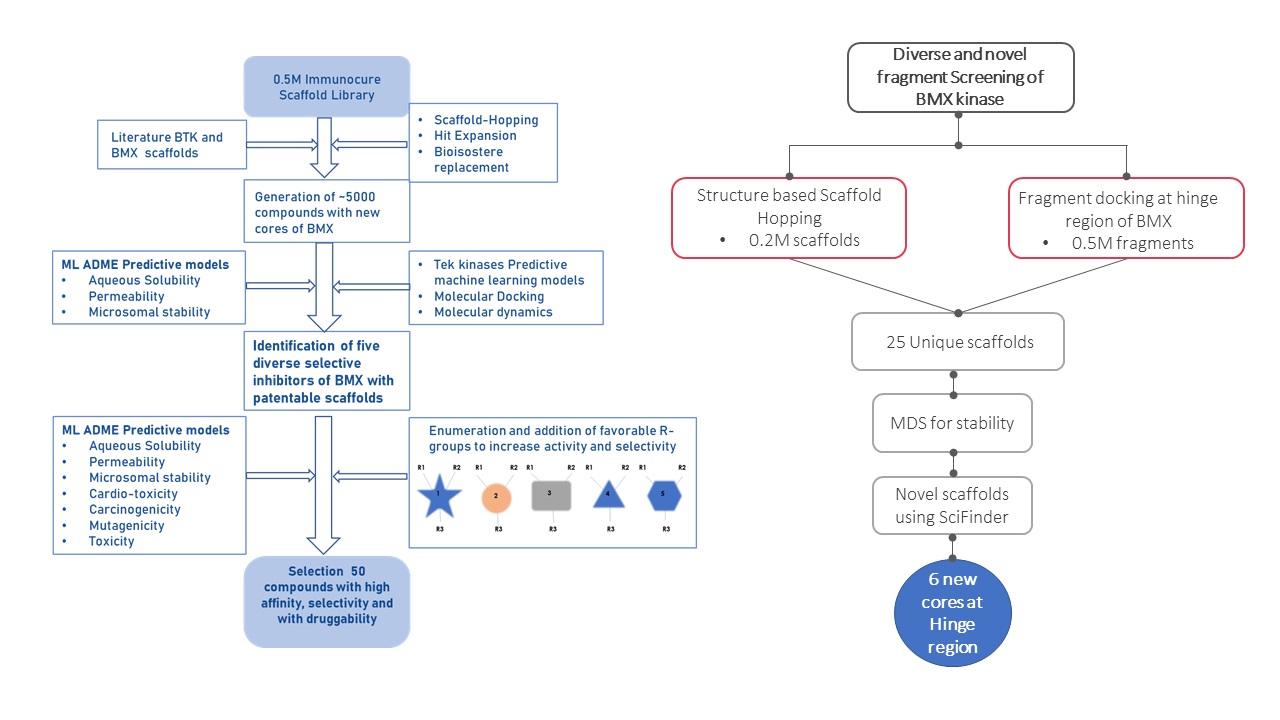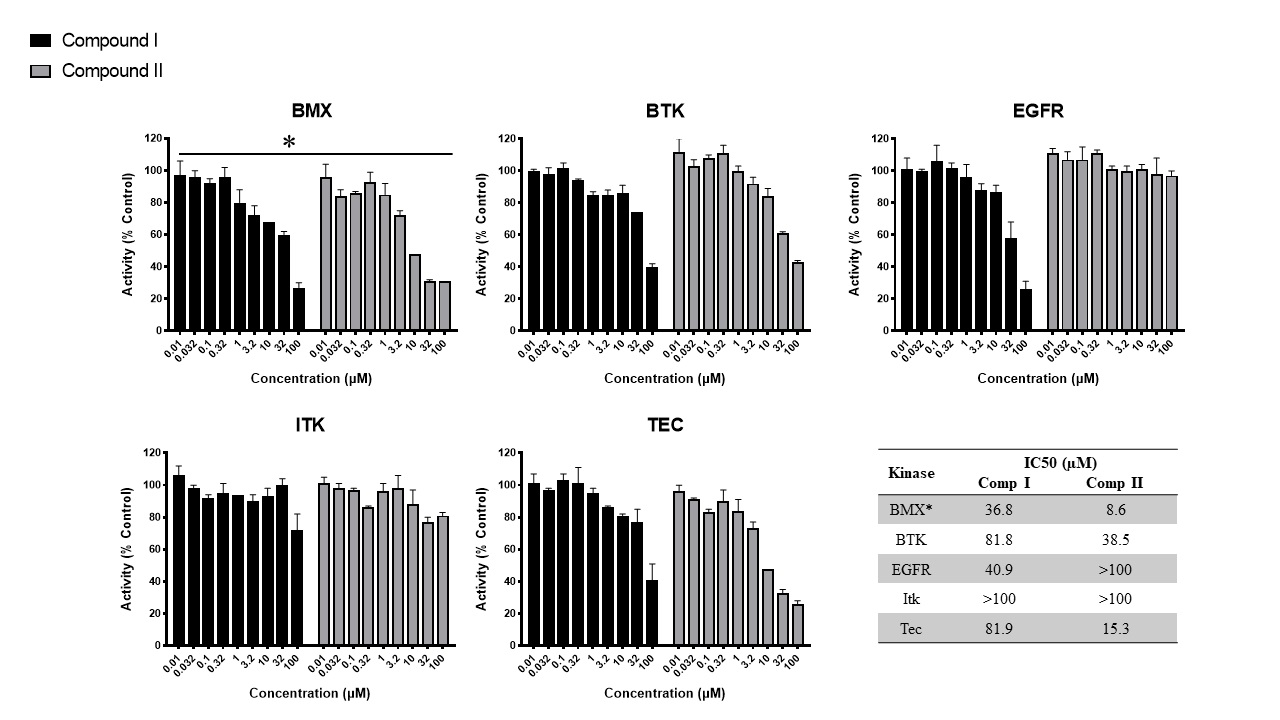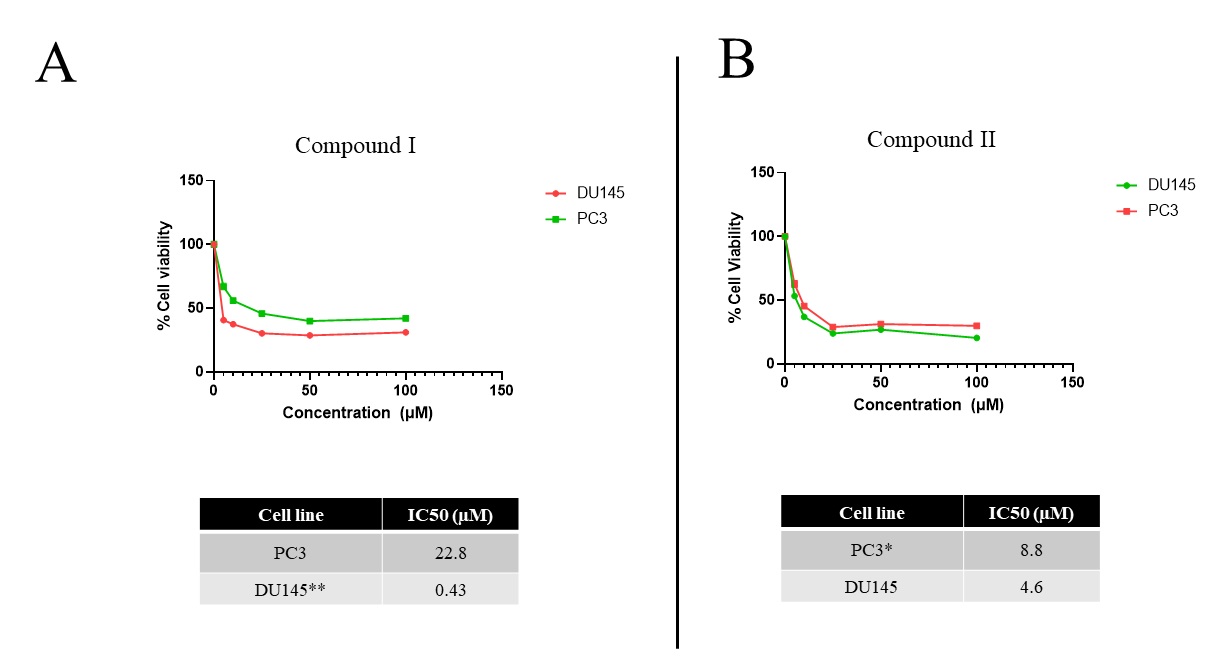Discovery and Basic Research
Category: Late Breaking Poster Abstract
(M1230-05-29) AI and Experimental-Based Discovery and Preclinical IND-Enabling Studies of Selective BMX Inhibitors for Development of Cancer Therapeutics
- AA
Ahmed Abu Fayyad, Ph.D., R.Ph.
Associate Professor of Pharmaceutics
Long Island University
Brooklyn, New York, United States - AA
Ahmed Abu Fayyad, Ph.D., R.Ph.
Associate Professor of Pharmaceutics
Long Island University
Brooklyn, New York, United States - RE
Rwan Elsanhoury, Ph.D. Candidate
Long Island University
Brooklyn, New York, United States - AA
Abdulaziz Alasmari, Ph.D. Candidate
Long Island University
Brooklyn, New York, United States - MJ
Mouhannad Jumaa, Ph.D.
Fekra Therapeutics Inc.
San Jose, California, United States - SA
Suliman Al-Fayoumi, Ph.D.
Fekra Theraputics Inc.
Renton, Washington, United States - SN
Sami Nazzal, Ph.D.
Texas Tech University Health Sciences Center
Dallas, Texas, United States
Presenting Author(s)
Main Author(s)
Co-Author(s)
Purpose: The current work aims to design and provide a preliminary IND-enabling study of selective BMX inhibitors for cancer therapeutics development. BMX is an emerging target, more notably in oncological and immunological diseases.
Methods: In this work, we have employed a predictive AI-based platform to design the selective inhibitors considering the novelty, IP prior protection, and drug-likeness properties. Furthermore, selected top candidates from the initial iteration of the design were synthesized and chemically characterized utilizing 1H-NMR and LC-MS. Employing a panel of biochemical (enzymatic) and cancer cell lines, the selected molecules were tested against these assays. In addition, we used artificial intelligence to predict and evaluate several critical IND-focused physicochemical and pharmacokinetics values of the selected molecules.
Results: More than 50 molecules were designed in the present study employing five novel discovered scaffolds. Two molecules were nominated for further IND-focused studies. Compound II showed promising in-vitro activity against BMX in both enzymatic assays compared to other kinases and in cancer cell lines with known BMX overexpression. Interestingly, compound II showed very favorable physicochemical and pharmacokinetics properties as predicted by the used platforms.
Conclusion: The current work provides promising data on a selective BMX inhibitor as a potential lead for therapeutics development, and the asset is currently in the optimization stage. Notably, the current study shows a framework for a combined approach employing both AI and experimentation that can be used by academic labs in their research programs to more streamline programs into IND-focused to be bridged easily for further clinical development with industrial partners.
 Fig. 1: Workflow of the design used in generating the selective BMX inhibitors employing the Ax-Drug platform.
Fig. 1: Workflow of the design used in generating the selective BMX inhibitors employing the Ax-Drug platform.  Fig. 8: In-vitro biochemical evaluation of selective BMX inhibitors; Compound I and II against BMX and other similar kinases using KinaseProfiler™ radiometric assay. *P value < 0.05 indicates that compound I is significantly more active against BMX compared to compound II.
Fig. 8: In-vitro biochemical evaluation of selective BMX inhibitors; Compound I and II against BMX and other similar kinases using KinaseProfiler™ radiometric assay. *P value < 0.05 indicates that compound I is significantly more active against BMX compared to compound II. Fig. 9: In-vitro anticancer activity of compound I and II against DU145 and PC3 prostate cancer cell lines; (A) Compound I and (B) Compound II. *P value < 0.05 indicates that compound II is significantly more active against the PC3 cancer cell line than compound I, while (**P value < 0.05) compound I is significantly more active against the DU145 cancer cell line than compound II.
Fig. 9: In-vitro anticancer activity of compound I and II against DU145 and PC3 prostate cancer cell lines; (A) Compound I and (B) Compound II. *P value < 0.05 indicates that compound II is significantly more active against the PC3 cancer cell line than compound I, while (**P value < 0.05) compound I is significantly more active against the DU145 cancer cell line than compound II.